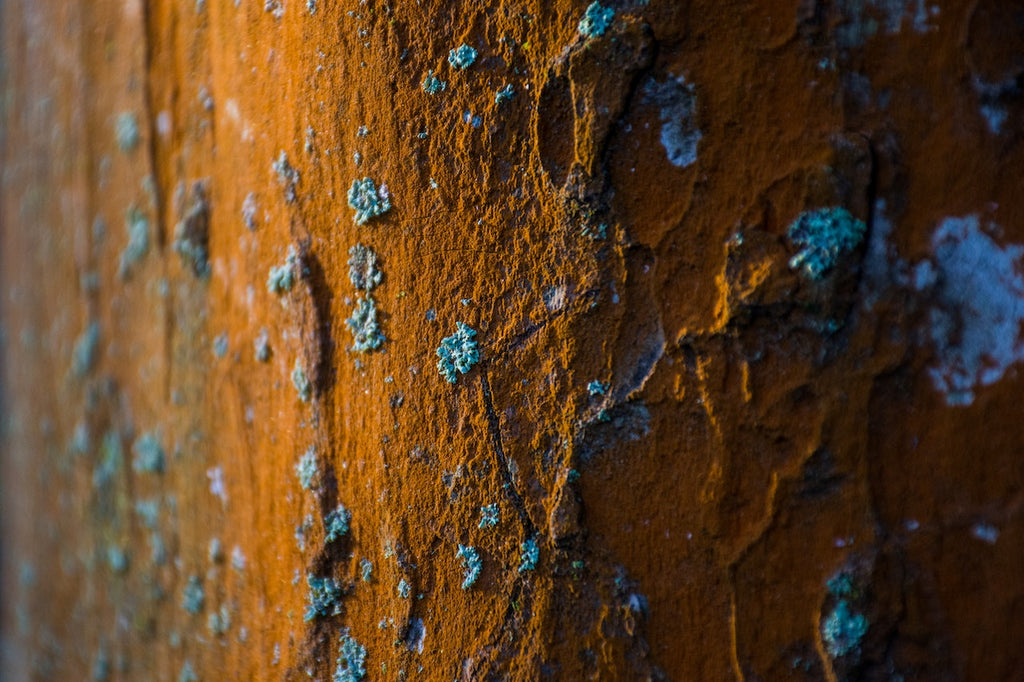Stainless steel water bottles look great and do the job of holding your water extremely well. But what else might you need to know about them? We’ve compiled a comprehensive list of commonly asked questions on stainless steel water bottles that we hope will help you in your quest for answers.
Are stainless steel water bottles safer than plastic?
Stainless steel water bottles do not contain chemicals. They are safe for you, your child and of course for the environment. It’s important that your stainless steel water bottle is of high quality - you need to buy a grade 18/8 water bottle as these are completely safe. Lower grade water bottles can degrade over time and become potentially harmful.
Drinking from a high grade stainless steel water bottle you can be sure that your water will be as pure as it is when you pour it in. Stainless steel does not contain any toxins that might leach into your drink.
Plastic water bottles may be cheaper and lighter than stainless steel ones, but they are most definitely not healthier. A plastic water bottle can actually turn your drink of water into a somewhat less healthy option - when you look at the chemicals that plastic may contain, the most notorious of which is BPA - Bisphenol A.

BPA is reported to potentially cause problems to human health including cardiovascular diseases, fertility problems, diabetes and metabolic disorders.
Additionally, BPA free plastic - which you might think of as safe - can contain other chemicals that are potentially just as harmful.

Aluminium water bottles can potentially have liners which can be made with BPA or other suspect chemicals. The reason that aluminium bottles have to be lined is that aluminium on its own can react with certain liquids and potentially contaminate your drink. Even if a BPA free liner is used, other chemicals will be employed instead and the manufacturer isn’t obliged to tell you what these might be.
Can you take stainless steel water bottles on a plane?
Yes, indeed you can take stainless steel water bottles on a plane. You just need to make sure that the bottle is empty of any liquid when you go through security. In a lot of airports there are taps where you can refill your water bottle once you go through to the departure lounge.

If you’re putting your water bottle inside a suitcase, it’s best to pack stainless steel water bottles in a hard backed case to be sure that they aren’t damaged during transit. Probably the best option is to carry your empty bottle in your hand or in your hand luggage.
Are stainless steel water bottles safe?
Stainless steel water bottles are very safe! They contain none of the nasty chemicals such as BPA that can be found in plastic water bottles. So you can be sure that you’ll just be drinking pure, healthy water, rather than absorbing any unwanted chemicals into your body. Stainless steel water bottles are widely regarded as the safest option for you when choosing a water bottle - as long as you opt for 18/8 grade steel rather than a lower quality alternative.
Stainless steel water bottles also won’t smash or crack as plastic or glass bottles can, making them safer to carry in bags for work or for your children to carry to school. A glass bottle, although tougher than you might assume, won’t be as durable as a stainless steel one and might crack in a bag or on a journey.
Not only are stainless steel water bottles safe for you and your children, they’re also safe for the planet. As they don’t contain chemicals, they won’t leach any into the environment, in fact the elements they contain actually benefit the earth, should they eventually break down. Most of the time stainless steel is recycled into other stainless steel items - many of which we see everyday - so it’s a very good option as an environmentally safe product.
Do stainless steel water bottles rust?
Usually stainless steel water bottles are highly resistant to rust. The higher the chromium content of stainless steel water bottles, the less likely they are to rust. A good quality 18/8 grade stainless steel water bottle - well looked after - should remain rust free with proper care.
Stainless steel water bottles can rust in certain circumstances - with constant exposure to humidity, fluids and high salinity. For example if they are continually exposed to sea water or are often left in humid environments, they may rust over time. So, if you are a fisherman or a yachtsman, taking your stainless steel water bottle on frequent trips afloat, continually exposing your water bottle to seawater, your bottle may show signs of rust after a time.

Most of us, however, are not voyaging into the humidity of the jungle on long treks, or being assailed by seawater as we are buffeted by storms afloat. Unless you are constantly exposing stainless steel water bottles to these kind of conditions they should not normally rust easily. If you wash in soapy water and dry thoroughly, storing them in a dry, cool place, they should remain rust free.
Should you notice any rust on your stainless steel water bottle it’s best to recycle it and buy a new one. Although rust can easily be removed from stainless steel, because your item is being used for drinking from, we don’t recommend that you remove rust and continue to use it.
Can stainless steel water bottles be recycled?
A resounding yes! Should you tire of your stainless steel water bottle, it most definitely can be recycled - stainless steel is 100% recyclable - it’s also very easy to recycle. This is one of its outstanding benefits.
It’s best to check with the website of your local council to find out whether you can put your used stainless steel water bottle directly into your household recycling, or whether they have another recommendation for recycling in that particular area.

Stainless steel can, in fact, be endlessly recycled. It’s used in so many products that we see everyday, medical implements, car parts, drinking bottles…..it has countless essential uses. The fact that it can be easily and infinitely recycled means also that fewer of the earth’s natural resources are used - if most of the stainless steel that we use is recycled, much less needs to be made from scratch.
Stainless steel water bottles are highly durable and will potentially serve you well over years of use, which makes them a good choice as an environmentally friendly product. So not only can they easily be recycled, but they should last for years.
Do stainless steel water bottles go mouldy?
Stainless steel water bottles are far less likely to go mouldy than plastic ones. They have smooth insides that are easy to clean and dry - unlike plastic ones which can have ridges and areas that are hard to reach when you clean them. Plastic water bottles are far more likely to harbour bacteria and mould for this reason.
Plastic water bottles are also going to get warmer than stainless steel ones, which means that they can become breeding grounds for germs if not properly washed.
Stainless steel water bottles should not usually get mouldy with proper care. However, any surface can potentially get mouldy if you don’t wash and dry it thoroughly.
Stainless steel water bottles should be washed well in hot, soapy water after each use; you should leave your water bottle upside down with the lid off to drain properly and air dry. Never put the lid back on if there is still moisture in the bottle.
Ensure that you store your stainless steel water bottles in a cool, dry place away from direct sunlight. Then your water bottle will be clean and ready for the next use!
Are stainless steel water bottles dishwasher safe?
It’s usually best to wash stainless steel water bottles by hand. This is the best policy for several reasons: the bottles may be powder coated; the bottles may be double lined; added to this, washing liquid from a dishwasher can damage your bottle.
Powder coating enables the manufacturer to present your bottle in many different colours and finishes - as well as being a good base for personalisation. This coating may be damaged in a dishwasher, so hand washing is important.

A single lined stainless steel water bottle may be fine in a dishwasher, but it won’t keep your drinks cold or hot! Double wall lined stainless steel water bottles must be washed by hand to preserve the integrity of the lining and also the vacuum.
To be sure, it’s best to check your bottle’s packaging for symbols that will tell you whether or not it’s dishwasher safe. If you’re unsure, it’s always best to err on the side of caution and wash by hand.
How long do stainless steel water bottles last?
Stainless steel water bottles are highly durable: they can have a life of 10 - 12 years if carefully treated. This is much longer than plastic water bottles!
Like most things, the durability of your stainless steel water bottle really depends on how you look after it. If it’s washed, dried and stored correctly, and not continually dropped or misused, it will last many years.
However, if you don’t wash it or constantly bash it about, it won’t have such a long life!
Stainless steel water bottles have a very good reputation for longevity - in fact this is one of the reasons that they are so environmentally sound.
How often should you wash stainless steel water bottles?
Stainless steel water bottles should be washed after each use, and before use if the bottle is new. Additionally, if you’ve stored your bottle for a while without using it, it’s best to wash and dry thoroughly before you use it again.
This will ensure that your water bottle stays clean, fresh and ready for your drinks.
You should wash your water bottle by hand, in warm, soapy water, taking care to clean the inside and any lids or spouts thoroughly, rinsing well. The bottle should then be left to air dry; the lid should not be put back on the bottle until everything is completely dry. You should always store your bottle in a cool, dry place away from direct sunlight.
If it’s been a while since you’ve used a stainless steel water bottle, it’s always best to re-wash it just to be sure that it’s totally ready for your drink.
Are metal water bottles good for the environment?
Yes! Metal water bottles are recyclable and much better for the environment than plastic ones.
We’ve all seen plastic and single use water bottles lying around our countryside and on our beaches - and we’re aware of the harm they can do to our planet and its wildlife.
But it’s not only the plastic bottles left lying around - possibly taking hundreds of years to break down - these are only half the story. It’s also the production of plastic water bottles that is harmful to the environment.

The manufacture of plastic involves the emission of fumes into the atmosphere, releasing chemicals which have been linked to respiratory illnesses and some cancers amongst other diseases.
How do we measure whether a product is environmentally friendly? Well, there are many factors to consider. Let’s break this down into a few distinct areas of importance:
Biodegradability Not known as a biodegradable product, stainless steel will actually break down naturally in the environment eventually - but it will take hundreds if not thousands of years. When it does break down its components will not harm the natural world, in fact they will enrich it. Titanium, manganese and iron are all natural elements contained in stainless steel which will benefit the soil.
This is in stark contrast to plastic, which will never biodegrade and contains chemical elements that are harmful to the environment and its wildlife.
Sustainability - Stainless steel water bottles are sustainable! Originally stainless steel was made from iron ore blasted in a coal fired furnace along with other minerals - a process which was potentially polluting. However, around 80-85% of the stainless steel produced today is made from recycled metal blasted in an electric arc furnace, which doesn’t harm the environment.
The production process for stainless steel has also been improved so that there is as little waste as possible, and that which is produced is largely recycled for other things.
Stainless steel water bottles are definitely a sustainable product - and buying one will be a positive step for the environmentally conscious consumer.
Carbon footprint - Modern manufacturing processes mean that the stainless steel industry is working towards a carbon neutral profile.
The durability of stainless steel means that the carbon footprint is also reduced - if items last longer, there is a lesser need for repeated processes and mining of minerals.
Environmental profile - Stainless steel is 100% recyclable, with scrap steel being converted into the many other stainless steel products used in the world today. Anything from kitchen utensils to machine parts; from surgical instruments to clips for your dog’s collar - stainless steel can be recycled into these and thousands of other essential products. Nothing is wasted and there are no chemicals used.
Aluminium bottles are also highly sustainable and environmentally friendly - aluminium is a plentiful resource and can be recycled endlessly. So, metal water bottles are certainly superior to plastic ones when it comes to their environmental profile!
How long can you keep water in stainless steel water bottles?
Technically, your water will stay safe inside your stainless steel water bottle for days or more. However, unless you’re on a jungle expedition or a desert hike, you’re unlikely to need to store it for anything beyond a day.
It’s recommended that, for ordinary usage, you should empty your water bottle each day, wash it and allow to dry thoroughly.
How long do drinks stay hot/cold in stainless steel water bottles?
If your stainless steel water bottle is double wall insulated then drinks can stay hot or cold for up to 12 hours. This can be really useful on hot days - or for a warm drink all through the day on a cold day!
Can you put stainless steel water bottles in a fridge?
You can put them in a fridge, but there really is no need and they will be very cold to the touch when they come out if you do so.
The best thing is to chill your water before putting it into a stainless steel water bottle, and it will then remain cold for up to 12 hours.
Can you put ice in stainless steel water bottles?
You can put ice in your stainless steel water bottles - it should even stay solid for quite a long time. The key is to open your bottle as little as possible if you want your ice to last as long as possible!
Filling your water bottle up to the top with the ice in is also a good tip. If there’s less air in the bottle then it has less chance to warm your drink and melt the ice.
We hope that we’ve answered some of your burning questions about stainless steel water bottles. We really think that they are the best option for carrying your drinks around - they are safe, environmentally friendly, easy to keep clean - and they look fantastic!
Bibliography
https://www.thyssenkrupp-materials.co.uk/how-is-stainless-steel-made






